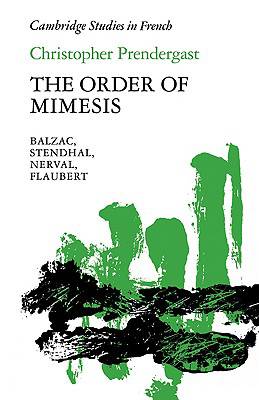
Door een staking bij bpost kan je online bestelling op dit moment iets langer onderweg zijn dan voorzien. Dringend iets nodig? Onze winkels ontvangen jou met open armen!
- Afhalen na 1 uur in een winkel met voorraad
- Gratis thuislevering in België vanaf € 30
- Ruim aanbod met 7 miljoen producten
Door een staking bij bpost kan je online bestelling op dit moment iets langer onderweg zijn dan voorzien. Dringend iets nodig? Onze winkels ontvangen jou met open armen!
- Afhalen na 1 uur in een winkel met voorraad
- Gratis thuislevering in België vanaf € 30
- Ruim aanbod met 7 miljoen producten
Zoeken
€ 77,95
+ 155 punten
Uitvoering
Omschrijving
This book is a challenging investigation of the idea of literary mimesis in the light of contemporary literary theory. Drawing on a range of theoretical perspectives developed in and around the work of Barthes, Kristeva, Genette and Derrida, Dr Prendergast explores approaches to the concept of mimesis and relates these to a number of narrative texts produced in the period which literary history familiarly designates as the age of realism: Balzac's Illusions Perdues and Splendeurs et Misères des Courtisanes, Stendhal's Le Rouge et le Noir, Nerval's Sylvie and Flaubert's L'Education Sentimentale. The book is not merely expository however: one of the author's aims is to engage with much of the polemical debate which has surrounded the topic, in the belief that a recognition of the historical conditions determining both the theory and practice of mimesis must be recovered.
Specificaties
Betrokkenen
- Auteur(s):
- Uitgeverij:
Inhoud
- Aantal bladzijden:
- 300
- Taal:
- Engels
- Reeks:
- Reeksnummer:
- nr. 12
Eigenschappen
- Productcode (EAN):
- 9780521369770
- Verschijningsdatum:
- 28/10/1988
- Uitvoering:
- Paperback
- Formaat:
- Trade paperback (VS)
- Afmetingen:
- 140 mm x 216 mm
- Gewicht:
- 381 g

Alleen bij Standaard Boekhandel
+ 155 punten op je klantenkaart van Standaard Boekhandel
Beoordelingen
We publiceren alleen reviews die voldoen aan de voorwaarden voor reviews. Bekijk onze voorwaarden voor reviews.











